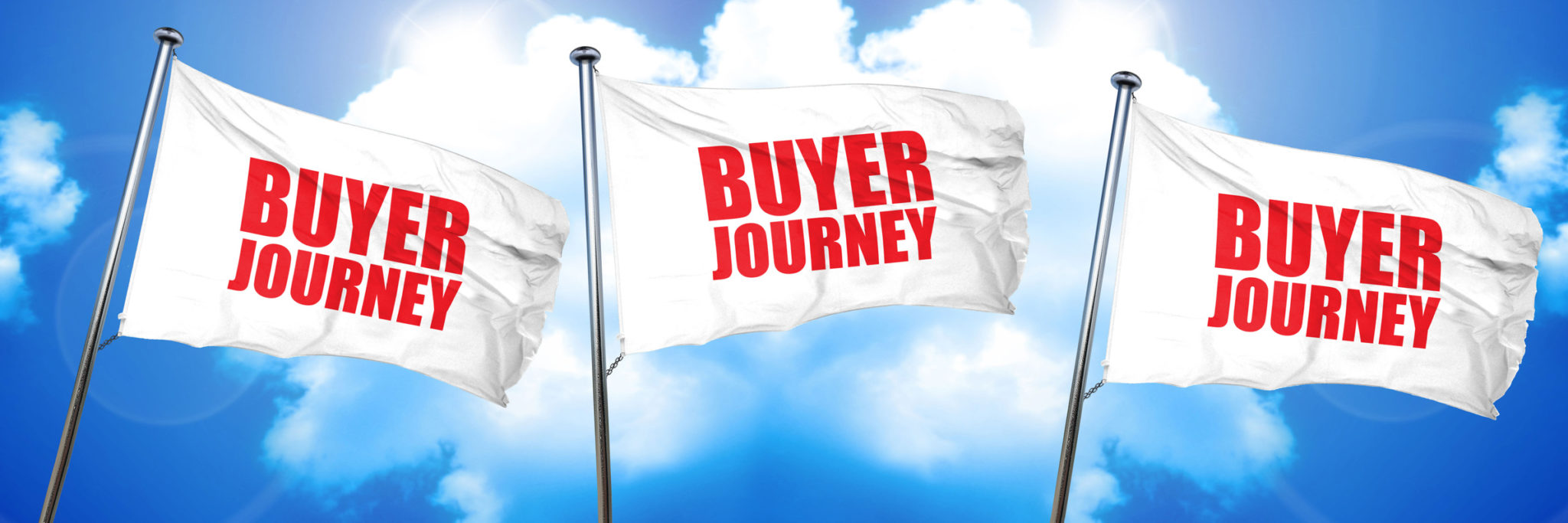The buyers journey is much more complex than in days past — and so is our understanding of it. It’s changed significant over just the past 2-5 years.
67% of the buyers journey is now happening online.
Many moving pieces align to get that sale and increase that all important overall CLV (customer lifetime value). That’s why industry leaders are focusing their efforts of mapping the buyers journey.
If a business wants to compete in this data-driven world, it will embrace the buyers journey. It will seek to understand where each customer is and what each customer needs to take that next step.
It will do this through data.
In this post, let’s look at 5 data-driven tips to mapping the buyers journey.
What Is The Buyers Journey?
All customers go through certain phases in the buying process. While different people will call these different things, at the very core they are:
- Brand Awareness
- Interest / Consideration
- Decision Making (which can involve others, especially in B2B)
- Conversion
- Promoter/ Loyal Customer
The journey is a journey for a reason. One can’t convert if they haven’t first become aware.
They won’t become a loyal brand advocate until they buy something. Treating a loyal customer like someone who isn’t aware of the brand can be harmful.
Likewise, jumping into consideration before someone is even aware of a brand can be a turn-off.
Business today are mapping their marketing messages to this journey to better “lead” customers through what has become a maze of distractions
Measure And Measure Again
How much do businesses today know about their customers? If business are using analytics and data-abstraction tools, they know a lot.
Tools today can track:
- Social media mentions
- Email chains
- Reviews
- Website visits
- Actions taken on the website
- General demographic information
It’s easy to get lost in the data. So, it’s important for a business to look at what they want to measure as they seek to understand the buyers journey.
Send The Right Message At the Right Time
Let’s look at how content can be tailored to the buyer journey.
Awareness
A new visitor has likely just become aware of a brand. During this phase, they need content that will get their attention and encourage them to move into the interest phase.
A strategy for this phase might look something like this.
- Draw them in with eye-catching headlines
- Provide them with free, useful information on the site
- Tantalize them with exclusive content that they can download if they give their email, etc.
- Follow upon that lead
Strategists further use the data that they collect about customers anonymously to improve the content during the awareness phase. For example, they look at what content types and topics get the highest response from new visitors.
From that, they develop a content strategy.
It’s important to realize that branded content and strong-arm CTA’s have no meaning to the buyer. They may even be seen as negative during this phase.
Interest
During this phase, customers are curious and digging deeper.
When data is analyzed, it should clearly show which content is most likely to take a lead to that next phase.
Using the data collected during the awareness phase, they’ll provide the person with all of the information they need to move into decision making.
Decision-Making To Conversion
This person is ready to make a decision and they’re already leaning in the direction of this business.
Depending on the product or service, it may be time to offer a free trial, help them figure out their ROI (for B2B) or offer them 20% to seal the deal.
Promoter
An organization’s goal should be to turn every customer into a promoter. Promoters are more likely to try new products, share with others and spend more on each purchase.
Content in this phase should be about relationship building. It should reward the promoter for their loyalty.
Personalize
A Gartner study found that personalization of content has the potential to increase profits by 15%.
Through the use of tools like Google Tag Manager, a business can create ads that are specifically designed for that individual — not only who they are but where they are.
Did a visitor just start a video but not finish it?
Did they abandon a cart?
Has a loyal customer not visited the site in a while?
Through remarketing, a business can now recapture this seemingly lost opportunity by sending the visitor a personalized message in the form of an ad on another site even though they don’t know the specific visitor was.
Data-driven personalization based upon the buyers journey can boost ad response by 400%
Repurpose Content To Align With The Buyer Journey
Great content isn’t cheap. Every piece of content that a company owns is an asset. They need to get the most out of each one.
Businesses that are successfully mapping their content to where customers are, keep the original content. But they repurpose it by:-
Reformatting Content
Making it a video, infographic, white paper or another asset that is better aligned with where the buyer is.
Changing Depth And Breadth
A beginner’s guide or introductory content can be expanded into more in depth content for those further in the journey. Or vice versa. Content that’s too deep could overwhelm during awareness. They might take content that’s detailed, break it up and make it less dense.
Modify The Message
They might change the message of an ad, etc.
Don’t Get Hampered By Pursuit Of Perfection
Avoid “not doing something” because you know you can’t get it perfect. The thing about the buyers journey is that it is learn as you go. And something is better than nothing.
You could get completely overwhelmed by data and become unable to act if you wait to have all the information.
If you beat yourself up for every missed opportunity instead of focusing on what they learned for the future, things would never get done.
If your organization is just beginning to map out the buyers journey, take it a step at a time.
If you’re looking to improve your analytics and better map content and strategy to the customer’s path, contact us today.

